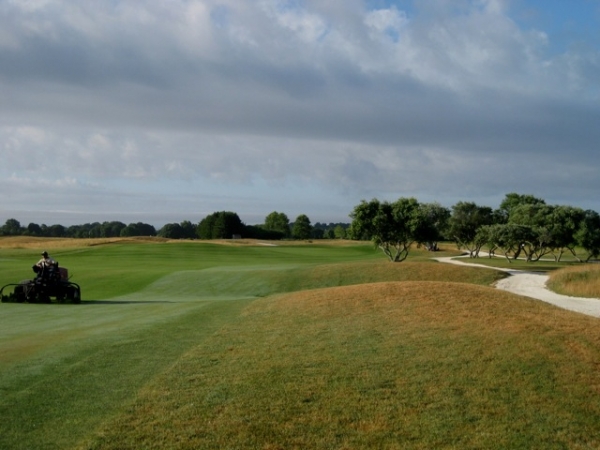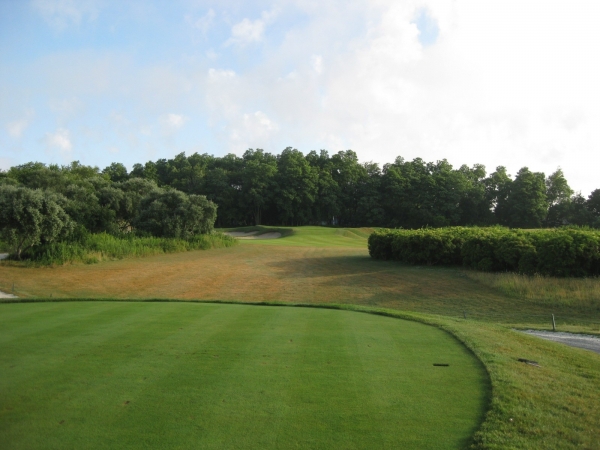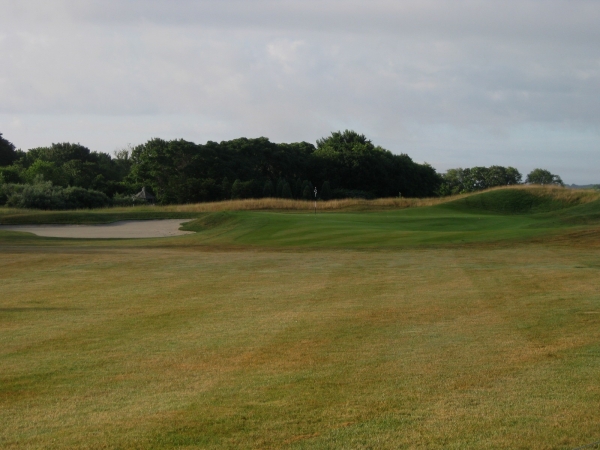Brown by Design
It sure has been a heck of a summer, hasn’t it? The upper Midwest has seen some brutally hot periods… very dry, and windy. Not a great recipe for keeping a golf course looking good – not to mention our own yards.
Our droughty conditions should serve as a great reminder though – that we don’t need to have everything green and lush all the time. I think of that every time I drive through my neighborhood and see all the careless irrigating going on. Meanwhile, the majority of my clients are managing their resources really tightly right now – not only because times are tough, but also because water is scarce. Yes, golf courses might just be more responsible stewards of our environment than anyone!
With this, Newport National Golf Club in Rhode Island should serve as a great model for us – both in good and in challenging times. Superintendent Scott Roche has perfected his management of the course to be constantly teetering on the edge. He keeps the turf healthy enough to be presentable, playable and manageable, but he also has very little water with which to irrigate, and must be very calculating in distributing water and conserving his key resource for the most lean times. He has been able to attain that “critical balance.”

When we designed and built the course over ten years ago, water was our main challenge – there just wasn’t enough of it available to meet most standard operating needs. So we decided to push forward anyway and design and build a course that would withstand more stress than other courses – it would conserve what little resources it had available throughout the year, and it would be managed very conservatively. We selected the most drought resistant turf grasses and installed the simplest, most efficient irrigation system. We even designed the drainage system so that it would collect, store and reuse storm runoff for future irrigation. In the early stages of the project, we sat down and made the decision when we hired the superintendent that we wanted the course conditioned to be firm and fast – and having some brown tones would suit just fine. We wanted out-of-play areas to be partially bare, with thin wisps of fescue (so that it had a more forbidding appearance, but without being a nuisance) – playable, manageable and aesthetically appealing, but with no water or other attentions required.
The founding members and investors bought into the concept immediately – not only because it was a responsible and fiscal approach, but also because they appreciated what this all meant to the golf experience. Firm and fast were good – and brown is just fine, so long as the turf is healthy enough to survive. If fact, when the grass starts to go off-color in the middle of the summer, word gets out that the course is coming into it’s prime and play actually increases to enjoy this window of perfect conditions.

The concept of firm and fast is not new – though after listening to the commentators during the US Open last month at Olympic, one might have thought it was now a fashionable fad. Well, maybe it is – but for many it’s not, it’s just a means of survival, and it happens to be a pretty smart approach. It has worked for hundreds of years in the British Isles…and Australia too. Even names like Shinnecock Hills, Maidstone, National Golf Links, and Newport Country Club comes to mind – some of the best courses in the world. They operate the same way; with a less is more approach.
Newport National Golf Club is rated among the top courses in New England and among the best public golf courses in the US. I just have to wonder if the experience there is so good – and yet brown and seemingly stressed – then we might just have yet another good model to follow after all.


Comments